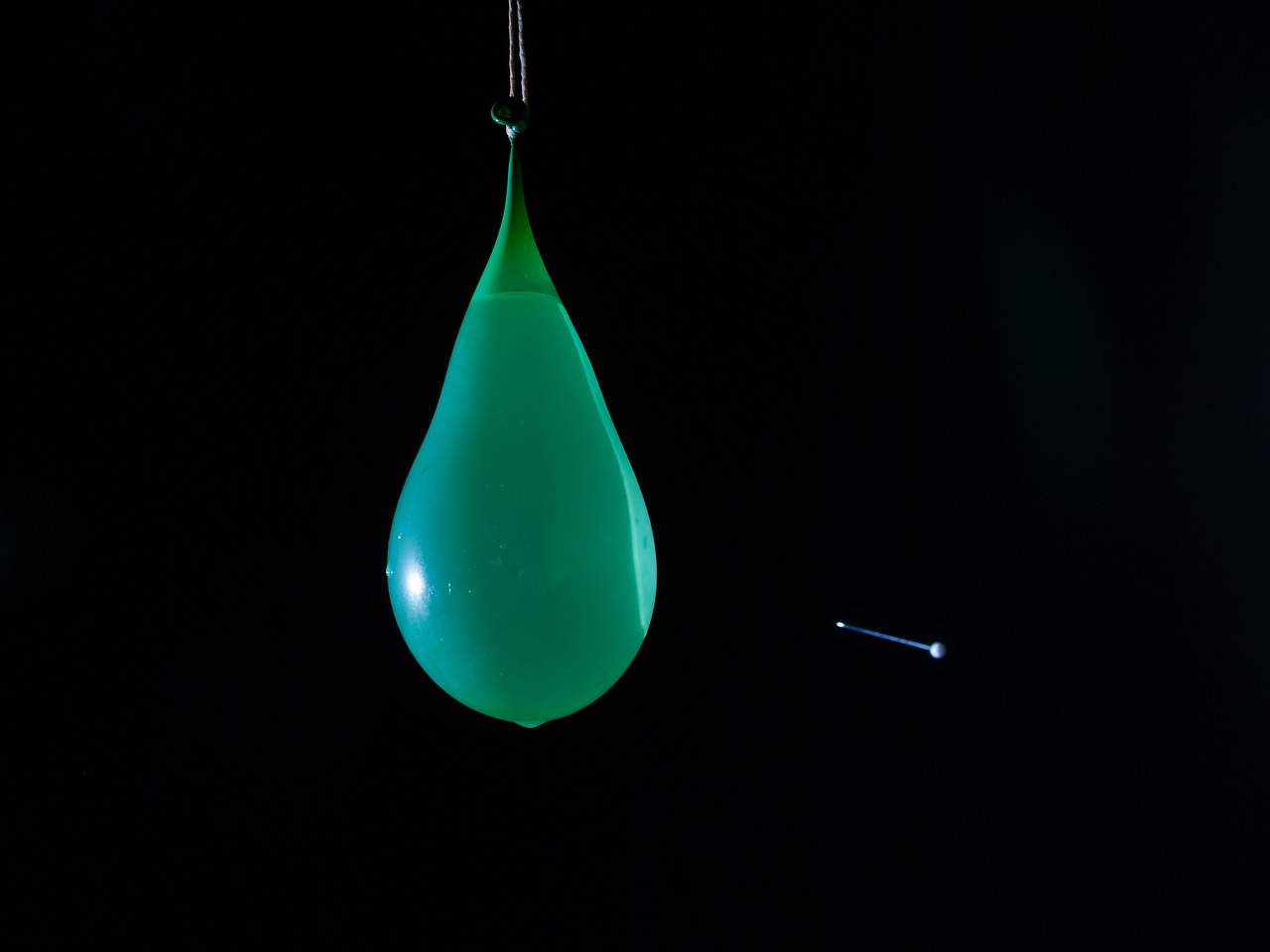
Preventing Pelvic Floor Leakages (It Ain’t Kegels)
My previous post got into the shame and embarrassment that prevents many of us from addressing issues with parts connected to sex or excrement. This one is more objective, looking at anatomy and physics. When you seek to understand the why, you must take a deeper look at what is. The steps of ‘how to fix’ align with what one knows about ‘how it functions’. Being able to give and take direction on ‘what to do’ is a byproduct of what you are able and willing to examine.
Two Axis & A Dysfunctional Pelvic Half
Instead of considering the spine as a singular axis, I have begun to consider each hip and each half of the pelvis as their own distinct rotational line. After Nicole Uno pointed out that one half rotates (left) and the other does not, I wondered about the pressure and position each side resided in. The left is my forward or ‘up’ leg. It tends to sit more forward and carry more load, particularly when sitting. I have to ‘screw it in’ by internally rotating through the hip and groin to get the right side to begin to bear weight.
The wild thing is that if I look at my body at rest, it does a version of this naturally and automatically:
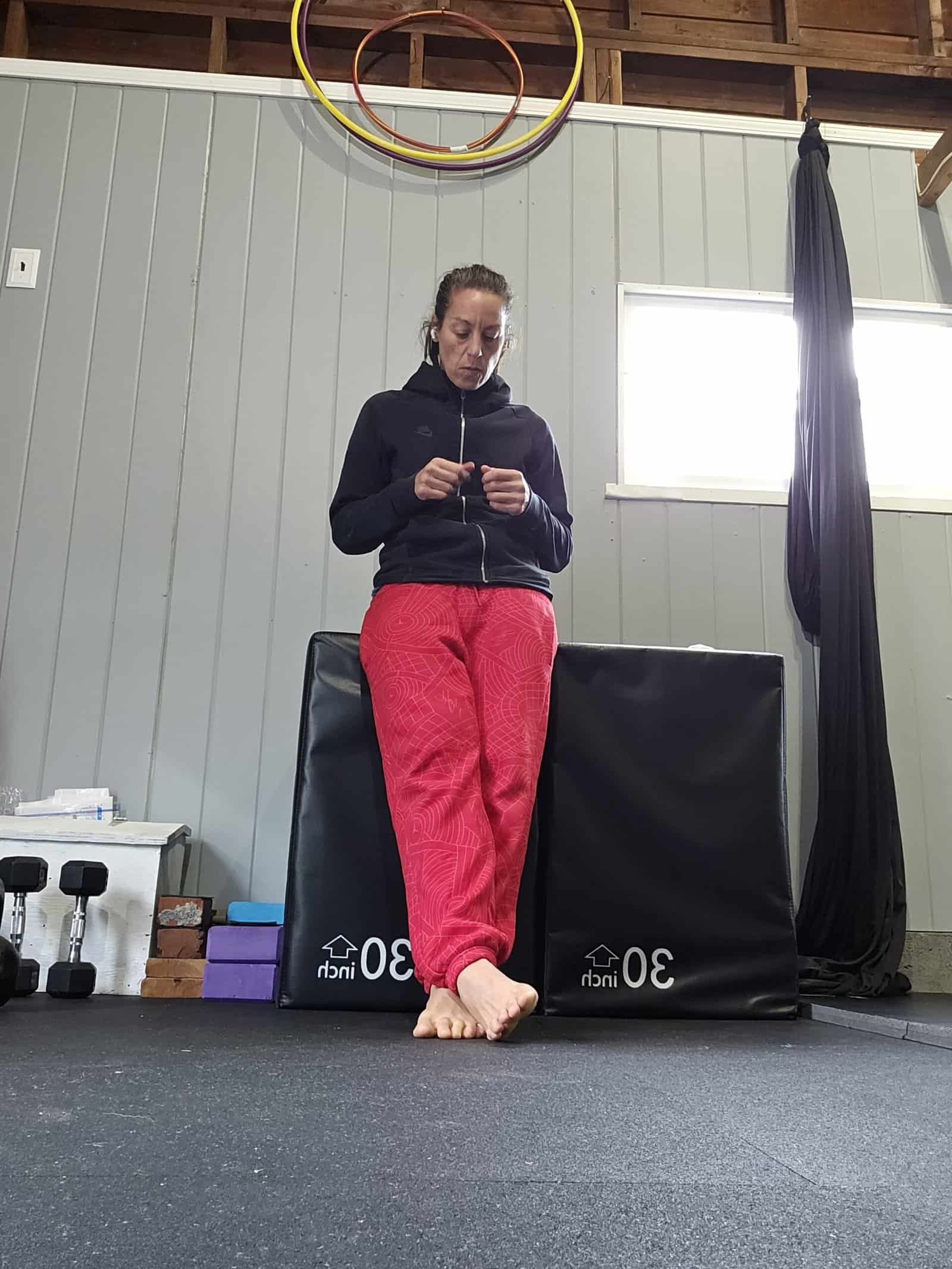
Simulating cell phone break. Left under, right on top.
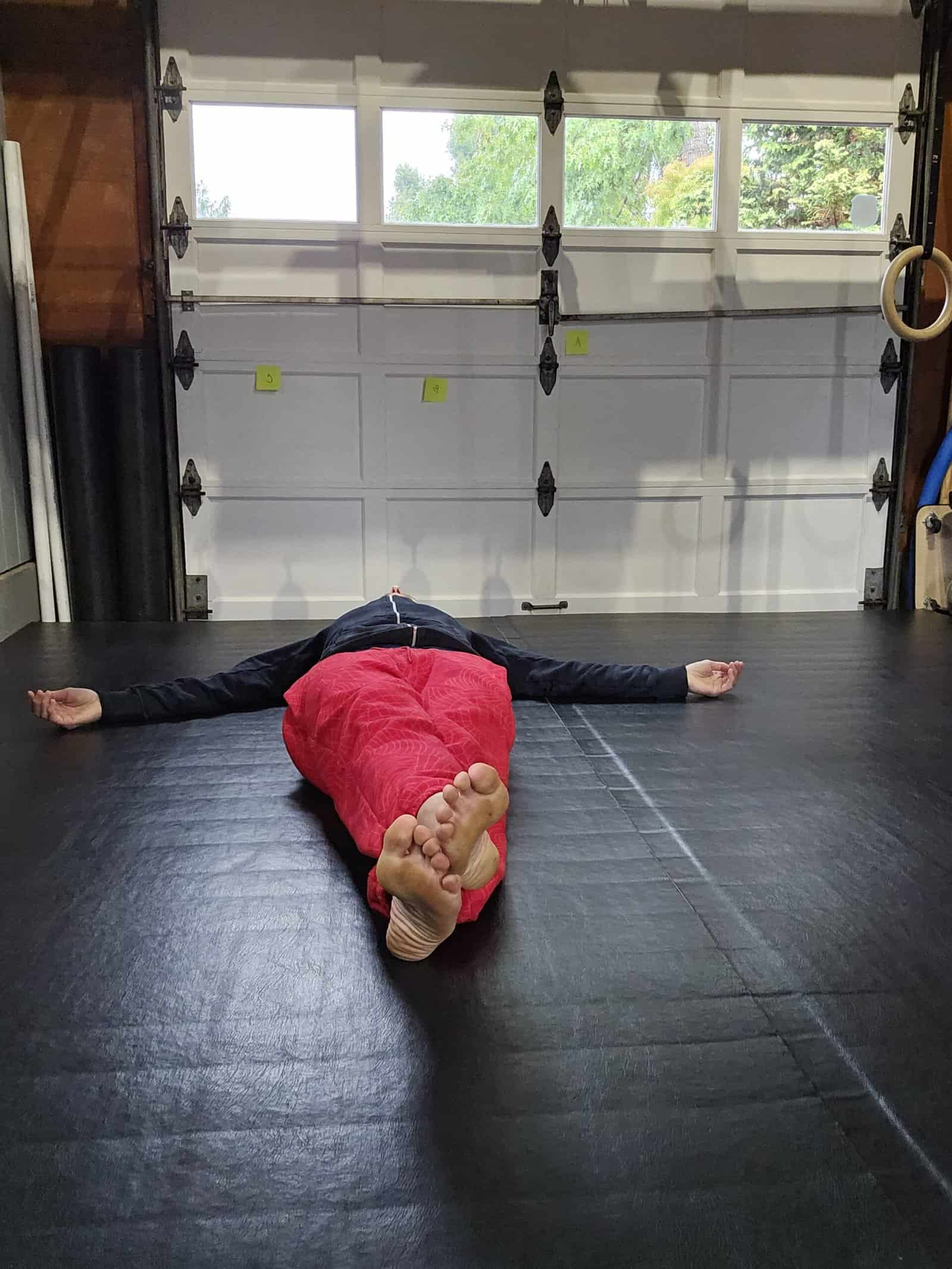
Same when I’m lying down. And if I have to quickly ‘catch a pee’ if I’m upright.
When I am sitting with my feet up, though, the opposite occurs — my left crosses over my right. I am pretty convinced, though, that reflects more of a systemic dislike for my left knee to extend when loaded (ACL repair eons ago).
These patterns and sensations when I am moving have led me to believe that my right half of the pelvic floor is my limiting factor. Tangentially, and not claiming causation, my right leg is my down leg. My entire right half ‘drops’ me, and my left half ‘catches’ me. The separation into halves is not purely theoretical. When you look at the anatomy, it forms to distinct sides:

Note that it’s the anus that’s in the center.
The differences between male and female tissues is quite stark:
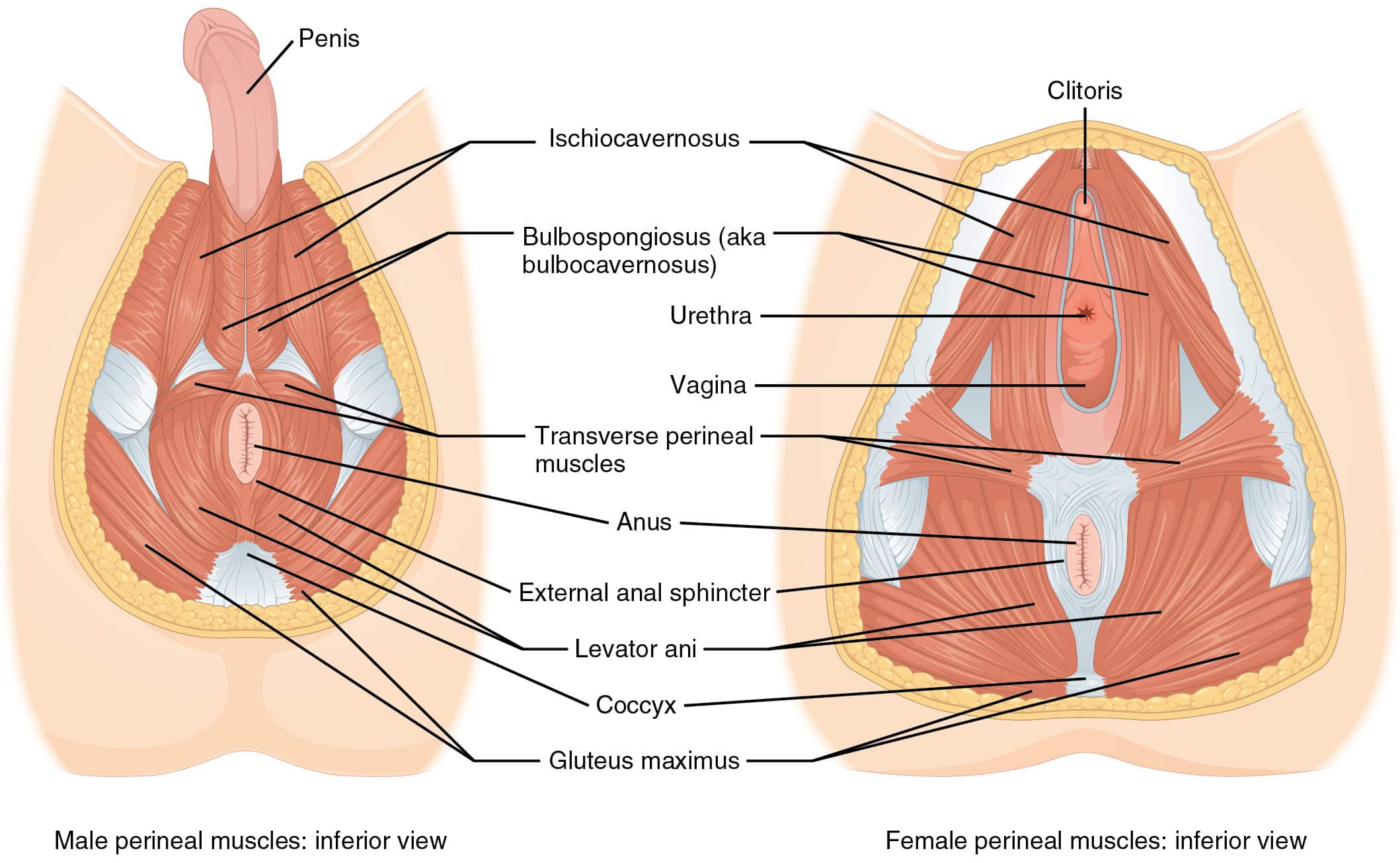
The white (connective tissue) and red (musculature) are almost reversed, particularly around the anus.
Perhaps this is the cause for the fundamental disparity between performance of the sexes. The structural deviation must at least play a significant role.
Another significant design feature is the ‘U’ shape of much of the musculature, particularly in the group that makes up the levator ani:

From teachmeanatomy.info (adapted from by OpenStax [CC BY 4.0], via Wikimedia Commons)
This rendition of a male pelvis (two holes) makes it even more apparent:
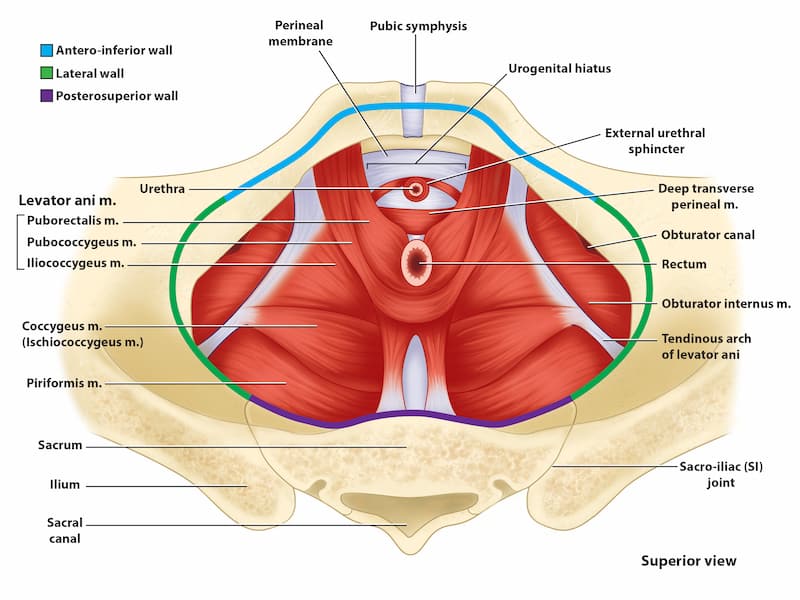
The ‘U’ suggests that any action to pressurize or ‘cut off the stream’ must be front to back. “Pull your pubic symphysis toward your coccyx.” This parallels the very specific (and effective) instructions that Adarian gave me (also the source of these anatomical observations): “Pull back the clitoris.” Oddly, I knew how to do this (non-manually, but with my brain). Even more surprising, it worked. It was not the same as a ‘belly’ suck-in; it was a particular layer, at a particular level.
The next and final piece in this series will describe how I integrate this information into the larger trunk or system: the neck, ribs, torsion, and the diaphragm.



